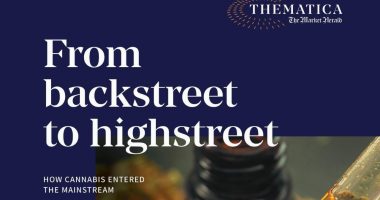The latest round of earnings are set to pour through, with the US banks on the radar of funds and analysts in the week ahead. Across the S&P 500, earnings are expected to slump by 44%. This would mark the worst quarterly results since the fourth quarter of 2008, when earnings plummeted 67% amid the heights of the GFC.
With low interest rates and a potential increase in provisions for loan losses, expectations are firmly in check for the banks. The financials sector entered the trading week down 24% year-to-date, versus 1.4% for the broader market. However, has the full extent of the current economic crisis been ‘priced in’, or can the banks deliver a better-than-expected set of results?
Charting uncertain territory
Lingering memories of the GFC have weighed on bank stocks ever since it became apparent that COVID would bring the US economy to a grinding halt. While a lot has been said of the somewhat better-than-expected economic data coming through, it’s becoming increasingly evident that the recovery will be clouded with uncertainty and difficulty.
Surging COVID cases in the Sun Belt states, which are among the most populous regions in the country, threaten to stall or even derail the economic progress made thus far. This goes some way towards explaining why the major banks have been among the laggards in terms of the stock market rally. If lockdowns are reimposed, the momentum is all but assured to fall out of the market.
Stimulus shielding the banks
Provisions for loan losses are set to be significantly higher than a year ago, with the banks setting aside enormous loan-loss reserves associated with the economic jolt of the pandemic. The banks moved quickly to boost their reserves after the first quarter, largely before the economic fallout or government response were able to be quantified.
Although the economic outlook remains uncertain, stimulus measures deployed across the economy are likely to help cushion the blow for the banks. Some of the potential outcomes that we consider possible include the preservation of rental income for landlords and a deferral in loan defaults, which would mitigate the ‘need’ for any further (sizeable) provisions.
Of course, even if these provisions might not be strictly necessary, the banks may well opt for a cautious approach in light of the uncertainty surrounding the economic reopening. However, if further provisions are made, we believe it will most likely be framed around the view that further stimulus support may not be forthcoming, at least in the near-term. The latest word from the government suggests the next round of stimulus, whilst tweaked, could arrive sooner than later.
This time is different…
Unlike 2008, banks today are well capitalised. The Federal Reserve recently completed its stress test across 34 banks, each with over US$100 billion in assets on their books.
While all the headlines focused on the Fed’s decision to freeze stock buybacks and cap dividend payments, test results highlighted an inherent resilience at the heart of the US financial system. In its findings, the Fed declared that all 34 banks would be able to maintain minimum capital requirements under a “V-shaped”, “U-shaped” or “W-shaped” recovery. Notwithstanding this observation, the Fed noted that roughly a quarter of banks would “approach” minimum capital levels under a “W-shaped” scenario.
In the case of the big six banks, all bar Wells Fargo are expected to maintain their dividends, such is the extent of their capital buffers. In the case of Wells Fargo, the Fed is effectively ‘guiding’ it to manage its balance sheet. The results reinforce the notion that the banks are far-better capitalised and more resilient than in the GFC, with substantial transformation since the collapse of Bear Stearns. This is also evident in the higher underwriting standards for loans.
It is widely known that credit costs have been rising, but there are some potential mitigating factors that may, again, shield the banks from a worst-case outcome.
When the Fed rushed through an emergency rate cut on March 15, before beginning an aggressive bond-buying program, corporate firms locked in low interest rates via issued bonds. Lower rates have also spurred on mortgage refinancing activity. And then there is the remarkable rally in equities during the second quarter, which should support fixed income trading and derivatives income. Each of these trends should, in part, offset margin constraints.
Navigating the path forward
There is little doubt that the banks are highly vulnerable to further economic shock. The numbers set to come out are sure to be ‘ugly’ but some factors have protected them from what may have been an even dire position.
With that in mind, the forward outlook provided by each of the banks may well hold more importance than any other time in their history. They will set the tone for what they believe the economy might begin to look like in 3 months, in 6 months, in 12 months and so on. Even then, they can only put forward their best estimates, and in today’s situation, that can change rapidly.








